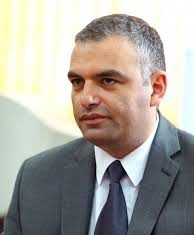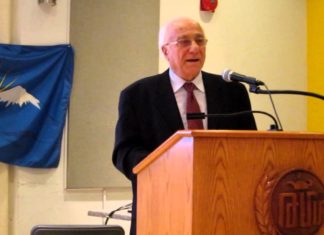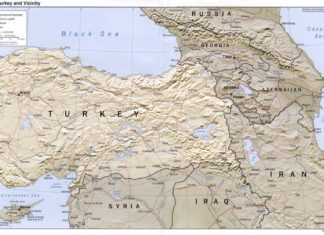By Rev. Arnak Kasparian
The Armenian Church is still not treating women as equals to men. The argument against giving women full rights is an old one. The basic argument goes like this: God became man in order to bring salvation to the world. Since God incarnate was a man, it follows and that His fundamental work on earth must be carried out by men, and furthermore, since the church is the Body of Christ (a male person), it follows that those who do the work of the Church must be male. So, we find our Armenian Church a male-dominated institution starting from the very top on down — the Catholicos, the bishops, the priests, the deacons and the clerks (tbirs). In fact for much of our history most of our choir members, assembly delegates and Parish Council members were men.
First let me make a comment about Jesus. The Bible says that God became man, which means God became a human being. In fact, in the book of Genesis, it says that “God created man in his own image, male and female he created them.” The division of mankind into men and women is merely a biological function of reproduction. Men and women are both human, made in the image of God. One is not inherently superior to the other, and the social roles developed between them is a distinction made by society and not by God.
If we in the 20th century in America cannot accept mankind as two equal alternatives of humankind, male and female, how can we expect that 20 centuries ago, in a remote corner of the world, that God would become a female person in order to do his work on earth? Society would not have accepted it back then, when there was a patriarchal culture, but we should know better today. God can express himself through men and women equally. Finally, although we called God “the father,” that is also a convention. Obviously God and the angels do not biologically reproduce, therefore they are neither male nor female.
The emphasis in our church on male domination is simply wrong and male-made, hardly the will of God. Through the centuries, this patriarchal view of the world started to change and women have slowly begun to be granted the equal status they deserve. There was a time when there were no women in the choir, on the Parish Council, nor were they Diocesan delegates or Diocesan Council members. Progress is being made, but still more progress needs to be made. Only time will tell.
So far, we do not see women serving as deacons in the United States. In fact, most Armenians do not realize that traditionally the Armenian Church has had female deacons. Historical documents record the names of some eastern deaconesses from the fourth to the sixth century. The most celebrated of these is Olympia, a deaconess and a friend of Patriarch Hovhanness Voskeperan (St. John Chrysostom, fourth century). There are a number of references to ordination of deaconesses in the Armenian Church. The oldest one is an 11th-century Mashtotz (Manual of Ordination) kept in the Isle of San Lazaro, Venice, Italy. Another one, dated 1216, has “an ordination service for women deacons, which are deaconesses.” A third reference is one in Holy Echmiadzin, dated 1314, with a canon “to ordain a deaconess.”







